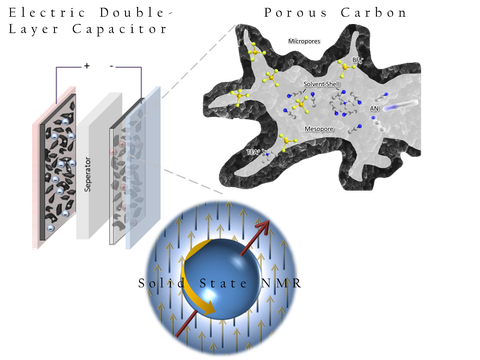In situ NMR spectroscopic investigations of ion adsorption mechanisms on nanoporous carbon materials
Duration: August 2016 - Juli 2019
Over the course of the last decades, nanoporous carbon materials have gained considerable importance for the electrochemical energy storage. This is because of their excellent materials properties such as electrical conductivity, chemical and thermal inertness as well as their high surface area. However, to understand the molecular processes occurring during the energy storage process, advanced characterization techniques such NMR-spectroscopic methods are crucial. Besides the investigation of the carbon electrode itself, particularly the interaction of the carbon with electrolyte molecules is of huge importance. Here, it is even more important to understand the mechanisms under working conditions of the device by using in situ NMR techniques.
Within this DFG project, we use model carbon materials with tailored pore sizes and surface characteristics. Applying innovative in situ NMR techniques, we illuminate the mechanistic processes of electrosorption. This includes: (i) the synthesis and characterization of model materials with defined pore and surface structure (e.g. carbons with uniform or hierarchical pore architecture, with or without surface functionalities), (ii) solid state NMR investigations illuminating the interactions between the carbon surface and the adsorbed electrolyte ions. This will be conducted in presence and absence of an electrical field in order to investigate the influence of the charging state on the electrolyte ions, and (iii) the analysis of the pore filling mechanism (adsorption isotherms) via quantitative liquid phase NMR spectroscopy.
We are convinced that the insight into the molecular mechanism of electrosorption will help to obtain “design principles” for the synthesis of optimal electrode materials for supercapacitors and many other electrochemical energy storage systems.


